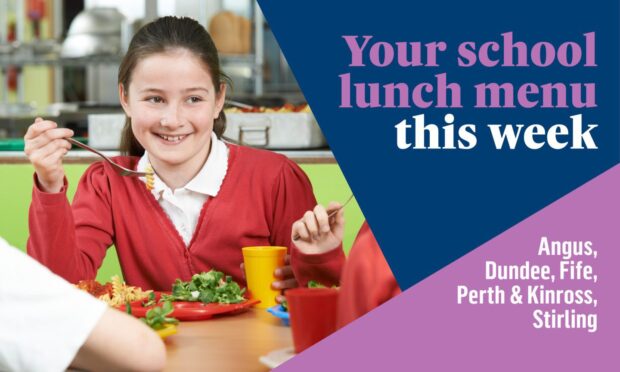Feeding the chickens helps Raven Parker-Gaines, 10, to feel calm and confident.
Using picture cards helps Paul Reid, 9, learn maths and communication skills as he serves in the school’s enterprise café.
These two very different activities are among numerous ways in which Kingspark School nurtures its pupils with complex learning needs – many of them autism.
And it is this approach that has led to it earning beacon status – the first school in Scotland to do so – from the National Autistic Society.
When The Courier visited to learn more about what the Dundee special school does that makes it deserving of the accreditation, Raven and her classmates were outside helping to care for its flock of hens.
Nearby, other children were watering vegetables and flowers and tending to the outdoor learning space which is being developed by Forest School-trained teacher Pablo Casado.
Inside, Paul was finishing his shift in the café takeaway where he had been taking orders using a pictorial menu.
In the café – as across the school – pupils, who may be non-verbal or have limited speech, use a communication system the school has developed.
A collection of pictures, symbols and signs are used for key words and phrases and ‘libraries’ of these are on walls in every room and in books which pupils can flick through.
Pictures, symbols and signs
They are even printed on key fob card decks carried by every staff member and programmed into alternative and augmentative communication (AAC) devices, such as tablets, used by some pupils.
Depute head teacher Eimer Galloway says staff focus on what the children and young people can do rather than what they can’t do.
And she says they share their approach – which focuses on communication and emotional regulation – with families so they can take the benefits home.
Eimer said: “Many of our kids are non-verbal but we have to think about what’s going to be the best mode of communication.
“We’ve developed our own communication boards throughout the school; it’s almost like a library.
“The kids have a variety of different ways of communicating; they might have an iPad with these symbols on it, some will make use of a book, others who are not at the symbols stage will use photographs.
“Some kids will use an object, for example a scarf will represent a game you’re going to play or a ball will represent going to PE.
“If they are at the very early social partner stage maybe they will need much more concrete objects, lots of hands-on activities, they’ll really need to be doing and active learning.”
If you are not calm and relaxed, you can’t learn.”
Depute head teacher Eimer Galloway
The school does have some autism-specific areas where those with complex needs can be in smaller groups in quieter, less busy spaces, but the entire school is autism-friendly.
Eimer said: “It’s about really understanding what the kids need.
“We have to think about how we are adapting the environment, how we are making sure we have the supports in place for them.
“We have to think about what helps them be calm, be relaxed.
“Because if you are not calm and relaxed, you can’t learn.”
Outside on the sunny day we visited, children certainly looked calm and relaxed as they pedalled adapted trikes round the playground.
As did Raven as she fed sweetcorn to the hens.
Working with animals, Eimer said, creates a “stillness”, “you have to be calm”.
Then, the garden can be an educational tool as children harvest their crops of potatoes, courgettes, strawberries, herbs and more, which can then be used in home economics lessons.
Pablo said: “We try to link what we do here with the curriculum. When we harvest the potatoes, for example, we do counting or we will order them by size.
“It [the garden] the might look untidy but the purpose of this is it’s for them to do it.
“We look after it with the classes, we don’t have a gardener.
“This is a happy place for them to enjoy, to explore.”
Kingspark School autism accreditation
The National Autistic Society recognises that without the right support autistic people miss out on education.
It grants beacon status to provisions which have already achieved an advanced award for quality and consistency of support but also demonstrate outstanding and innovative practice in sharing their expertise and knowledge.
Christine Flintoft-Smith, head of autism accreditation, said: “Kingspark School should be exceptionally proud of their achievement.”

















Conversation